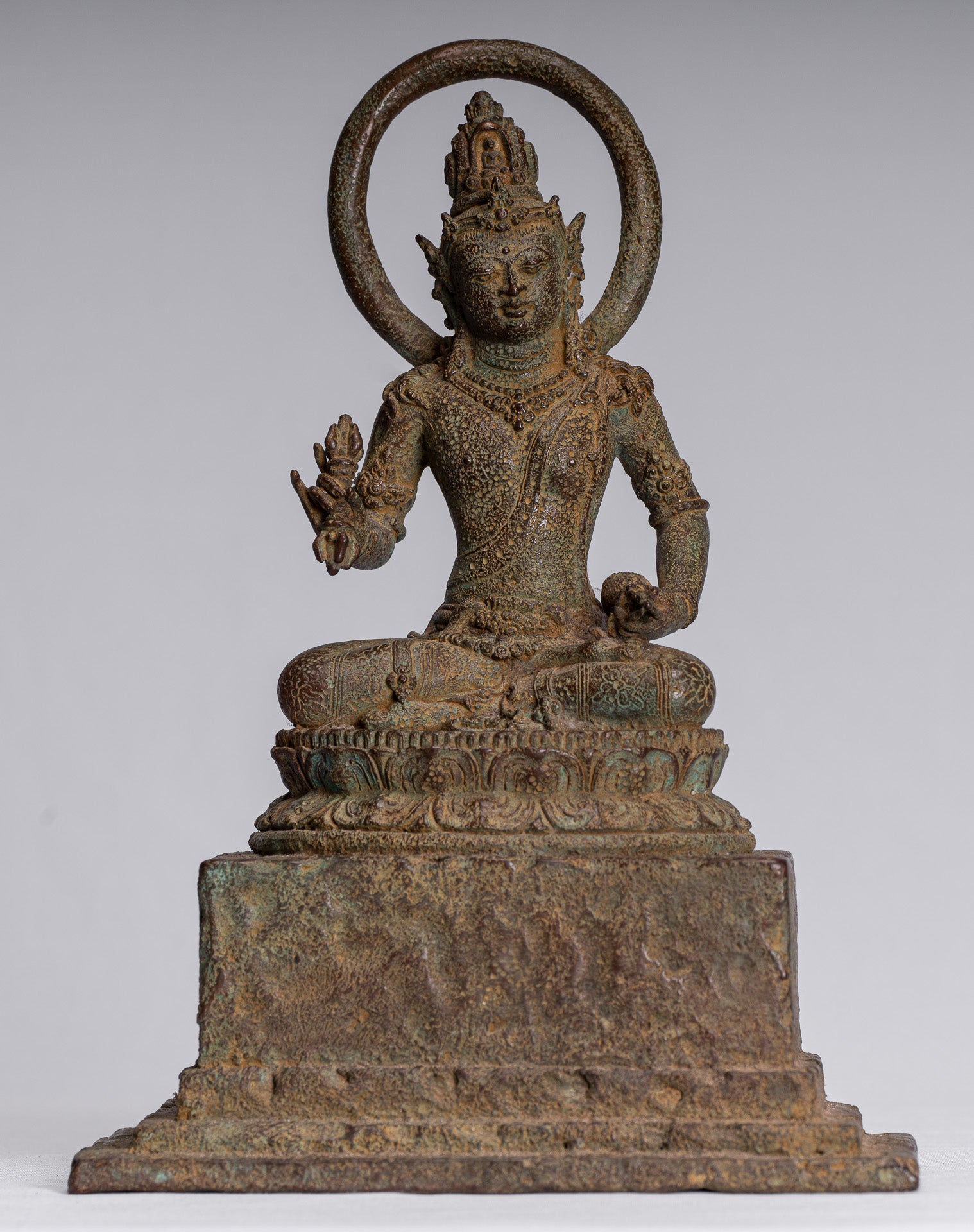-
Antique Java Style Majapahit Seated Bronze Devi Vajra Tara Statue - Protector & Preserver - 25cm/10"
Measurements Height 25cm/10"
An antique Java Style seated bronze Devi or Bodhisattva Vajra Tara sculpture in the 13th century Majapahit style.
Vajra Tara is also known as Mahacinatara and is one of the 21 Taras of the Buddhist scriptures. Vajra Tara can also be known as Blue Tara, Vajra Tara, Agra Tara and Ekajati.
Her ascribed powers, as per the Buddhist scriptures, are a removing of the fear of enemies, spreading joy and removal personal hindrances on the path of enlightenment. It is believed that Bodhisattva Vajra Tara is one of the most powerful and fierce Goddesses of Vajrayana Buddhism.
Bodhisattva Vajra Tara is taken as the protector of secret mantras of Vajrayana teachings, especially the Inner Tantras and termas. Also according to Namkhai Norbu, Vajra Tara is the principal guardian of the Dzogchen teachings.
In Buddhism, Tara is a Bodhisattva. She is the Goddess of Compassion. Here she is seated on round lotus petal pedestal which is itself stood on a square pedestal. Tara holds her vajra in her right hand.
The Vajra is a legendary and ritualistic weapon, symbolizing the properties of a diamond (indestructibility) and a thunderbolt (irresistible force).
The vajra is a type of club with a ribbed spherical head. The ribs meet in a ball-shaped top. The vajra is the weapon of Indra, the Vedic king of the Devas and Heaven. It is used symbolically by the dharmic traditions of Hinduism, Buddhism and Jainism, often to represent firmness of spirit and spiritual power.
According to Hinduism, the vajra is considered one of the most powerful weapons in the universe. The use of the vajra as a symbolic and ritual tool is mainly found in Tantric Buddhism.
Tara wearsa richly bejewelled dhotis and upavitas. Her face has a serene downcast gaze. Tara wears a decorative Javanese style tiara, on her head, in front of her Kirita-Makuta or tall conical crown. This symbolises her control over Positive and Negative attitudes.
She has an aquiline nose and elongated earlobes with large earrings. A beaded aureole stands behind representing her divinity. The standing sculpture has a wonderful green malachite patina.
A circular aureole or halo can be seen behind Vajra Tara. This represents Tara's divinity.
SATISFACTION GUARANTEE - We have been offering SE Asian Art for many years and are proud of the reputation we have developed for fair and honest listings. However, if for any reason, whatsoever, you are unhappy with your purchase please just let us know and we will provide a full refund. We want you to be 100% happy with your purchase.
-
The majority of orders will be shipped with DHL. This is a secure, express and fully tracked service.
Items less than 2Kg we typically ship using Royal Mail.
Once we receive your order we try to ship all orders the same or next working day.
Large and/or fragile pieces requiring palletising, specialist crating and/or extra packaging may take a little longer. Palletised shipments will be delivered curbside.
All orders over 35 GBP will be shipped free of charge.

-
We genuinely hope that all purchases delight.
However, if they do not, regardless of reason, we will refund all orders upon receipt of the unwanted item. Just notify us within 14 days of receiving your order that you wish to make a return and send the piece back to us with 30 days of delivery.
A Shiva statue is much more than a decorative object; it is a powerful focal point of energy, devotion, and symbolism. When choosing a wood, stone, or bronze Shiva statue, it helps to understand both the spiritual meaning and the practical markers of quality and authenticity.


















































